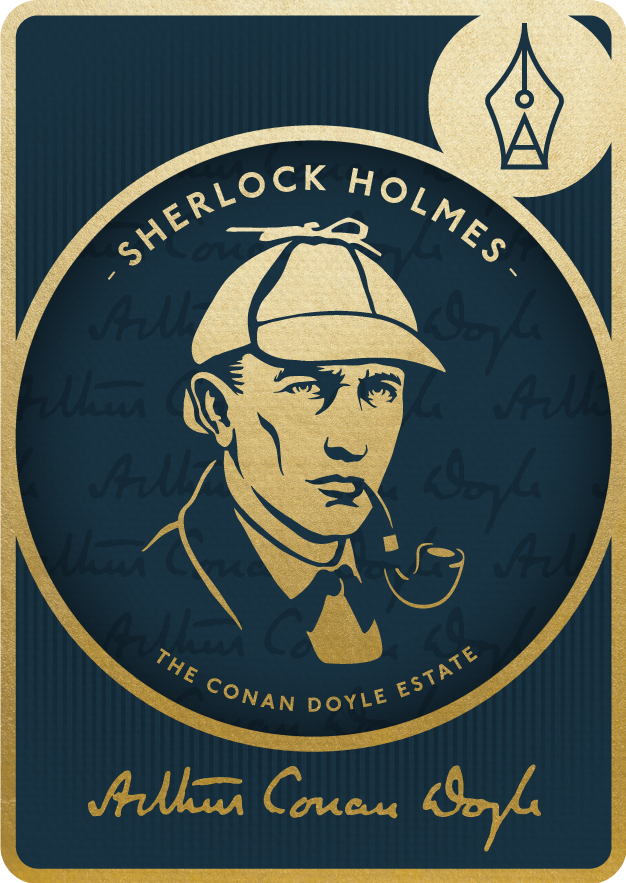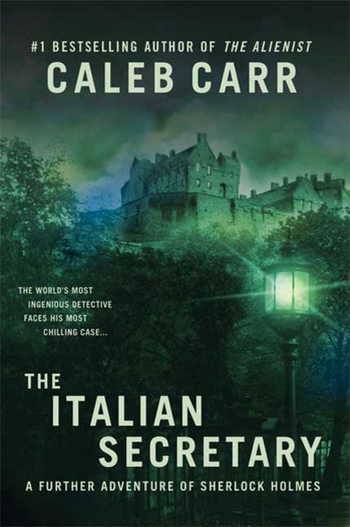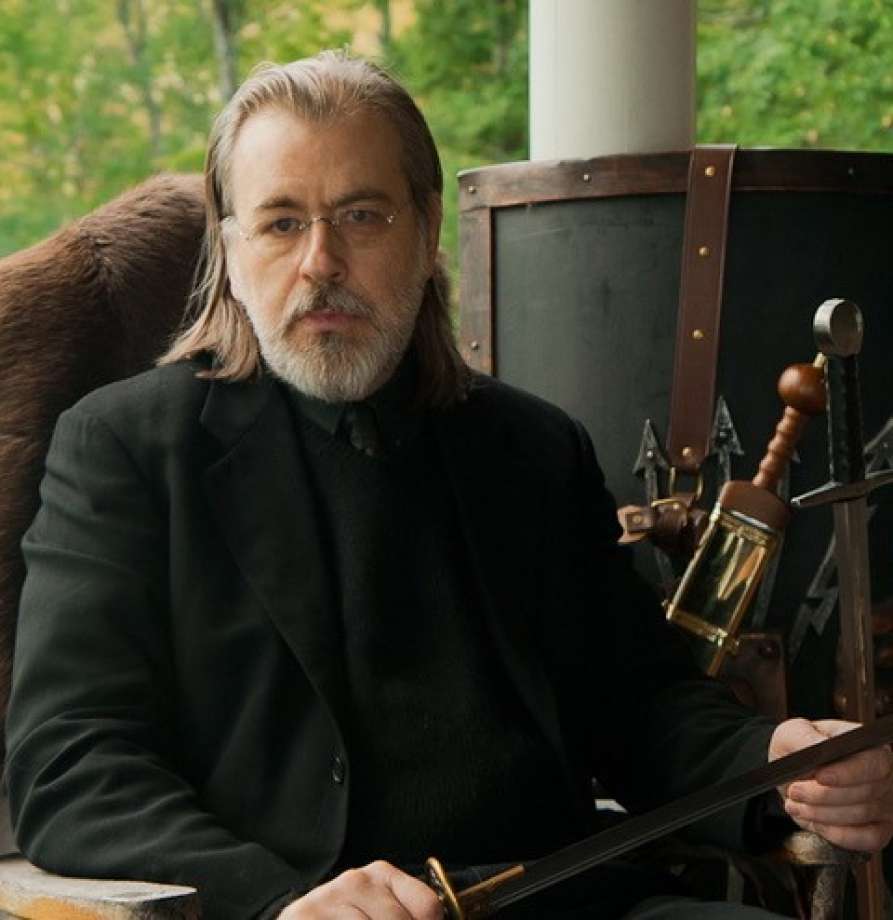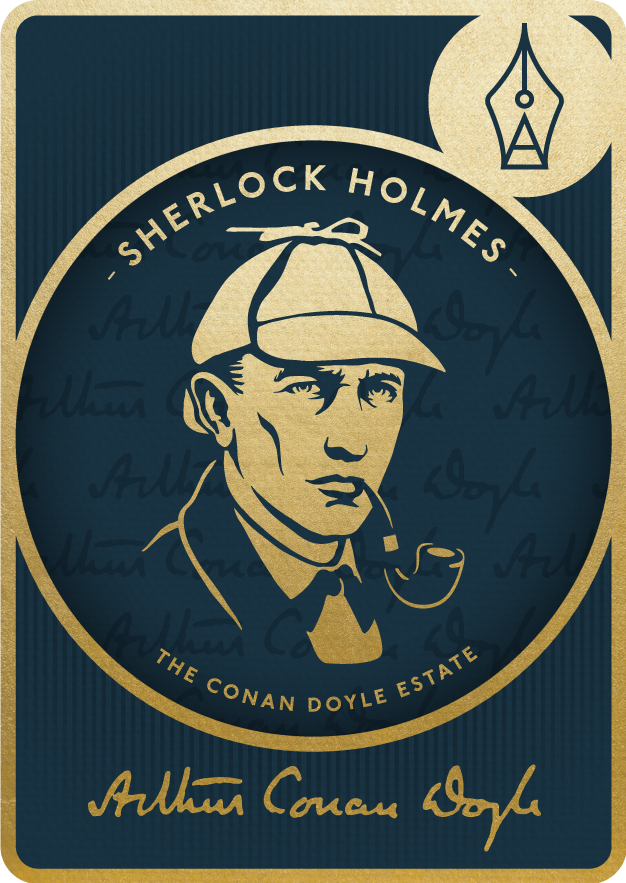
 Jeremy Brett's Sherlock Holmes
Jeremy Brett's Sherlock Holmes

 Caleb Carr, military historian and bestselling novelist
Caleb Carr, military historian and bestselling novelist
If you have notions about twisting the character of Holmes to meet your own purposes, about reinterpreting him, however humorously, bizarrely, or subtly, you’re doomed before you start — doomed to the merciless bog reserved for those projects that have gone down the same path.
There have probably been as many individual conceptions of who and what Sherlock Holmes is as there’ve been readers of Sir Arthur Conan Doyle’s stories. If you are to write your own Sherlock Holmes story, and play fair with Conan Doyle’s readers, begin with the constant awareness that your job is not to reinterpret Holmes, not to “make Holmes your own,” but to contribute in some small way to the public’s awareness of one of literary history’s most enduring characters — indeed, the most widely recognized fictional creation in the long saga of human storytelling.
If this seems at first restrictive, bear one or two things in mind: first, you’re embarking on a project by which you hope not only to further popularize Holmes, but make money as well. In other words, you’re engaging in one of the most morally challenging feats a writer can undertake: profiting by another author’s creation. Arthur Conan Doyle already did the heavy lifting, after all, and no writer has ever taken the pains that he did to legally secure the future integrity of his creation.
For all these reasons, if you have notions about twisting the character of Holmes to meet your own purposes, about reinterpreting him, however humorously, bizarrely, or subtly, you’re doomed before you start — doomed to the merciless bog reserved for those projects that have gone down the same path. This doesn’t mean you can’t take Holmes to worlds and on adventures that Conan Doyle himself might never have anticipated: but the key to success behind any such undertaking will be your determination never to break faith with the original tales by Conan Doyle, and above all, never to break faith with the character of Holmes himself.
But how can you truly understand that character, if you are not Conan Doyle?
In practical terms, you can make a start by immersing yourself in the world not only of Holmes, but of Conan Doyle himself, and forming an understanding of his motives for undertaking his detective’s stories. Certainly, those motives had a pragmatic component; Conan Doyle had long wanted to be a writer, and pecuniary pressures had been a constant of his early life. But the whys of his experiment are rooted, first, in an early childhood that saw his family scattered because of his father’s alcoholism and growing madness, which would eventually cause the elder Doyle to die in an asylum for the insane. Arthur’s childhood became one of living apart from his siblings, then rejoining them and his mother in an Edinburgh tenement. Next would come a sponsorship by relatives to a Jesuit school, so harshly run that it contributed to Arthur’s eventual rejection of Catholicism. Finally, the young man discovered an atmosphere encouraging creativity at Edinburgh University’s medical school, where he would not only start writing fiction in his spare time (little of it though there was), but encounter and work under the innovative, inquisitive, observant, and unorthodox (yet quite well-respected) Dr. Joseph Bell, who would prove a principal model for Sherlock Holmes.
Conan Doyle’s story from birth to university could have been lifted from the pages of that greatest Victorian master, Charles Dickens; yet any understanding of the man who’d succeed Dickens as Britain’s master of internationally popular fiction cannot end with his university days, for neither fiction nor medicine yet offered Conan Doyle a living. And so, obeying both financial need and a restlessly inquisitive spirit and intellect, he went to sea as a ship’s surgeon, prowling the North Atlantic and Arctic Oceans, and then the West Coast of Africa. His M.D. degree, when he finally was able to complete it, focused on a particularly Holmesian subject: tabes dorsalis, or nerve degeneration due to syphilis. In England Conan Doyle had a struggling medical practice in Southsea, Portsmouth, while trying his hand at several fiction genres that brought publication in various periodicals, but receiving from neither great reward nor much renown.
Finally, he turned his sights on the first of the Holmes stories; and when you reach this point in his tale you may think your job of research finished. In fact it has only begun. Now you must turn your energies not only to rereading the Canon (or at least the first part of it) in light of what you have learned about its creator, but to understanding who this character was that Conan Doyle, like any other author, formed partly out of imagination, but very largely out of experience.
Only at this point, as you research on (for this outline of Conan Doyle’s life up to A Study in Scarlet, published in 1887, is simplified in the extreme, and makes no allowance for that larger issue, the society in which young Arthur grew up), can you begin to form your answers as to what makes Sherlock Holmes tick. If you’ve done your homework, learned your vocabulary, understand Holmes’s (through understanding Conan Doyle’s) world, no answer — even the most subjective — will be truly wrong, provided that it is truly three-dimensional. If, on the other hand, you present Holmes as a cartoon, as a brainiac and/or a mere mad eccentric, and his chronicler, Dr. John Watson, as a mere intellectual foil, you will not only have failed, you will have betrayed Conan Doyle’s careful efforts to preserve Holmes’s integrity.
Some may say that all this is too much work, that all that matters to the general public today are the broad strokes of Holmes’s and Watson’s characters, while the details are irrelevant to a world that doesn’t read much fiction anymore. The broad Holmes of silly contemporary movies is far more important, some may claim, than any understanding of the character in the original novels and stories, much less any details of his creator’s life.
Be warned: that’s wrong. Heed such voices, and your subsequent missteps will cause you to wander piteously into the wasteland, like a moor pony stepping fatally into the bogs of the Great Grimpen Mire: you may make a great deal of noise for a moment or two, and that noise may frighten some people, even gratify their desire for a thrill. But it will in fact be the sound of your literary death throes, and soon your effort will be swallowed up, leaving only wasted effort behind.
This is all a measure of just how determined Conan Doyle was that all his characters, not just Holmes and Watson, had personalities, motivations, desires, loves, and hates that were fully developed, fully human. And because he had lived so very much by the time that he even started to work on the Canon, he was able to achieve that remarkable feat. For you to do anything less than put in the comparatively straightforward job of research prior and simultaneous to creation is to do more than rewrite Holmes: it is to desecrate the memory and legacy of his creator.
And Conan Doyle will not go easy on you for that. The game is only truly afoot when you are ready to play by his rules.
--
Written by Caleb Carr, a military historian and bestselling novelist whose work includes not only The Alienist (recently a TNT miniseries) and its sequels, but The Italian Secretary: a Further Adventure of Sherlock Holmes. His version of Holmes was explored further by Carr in his essay “Some Analytical Genius, No Doubt” in the 2006 collection Ghosts in Baker Street, co-edited by the late anthologist Martin Greenberg, award-winning Conan Doyle biographer Daniel Stashower, and Conan Doyle Estate Ltd. representative Jon Lellenberg. Mr. Carr lives in New York State’s Taconic Mountains.

